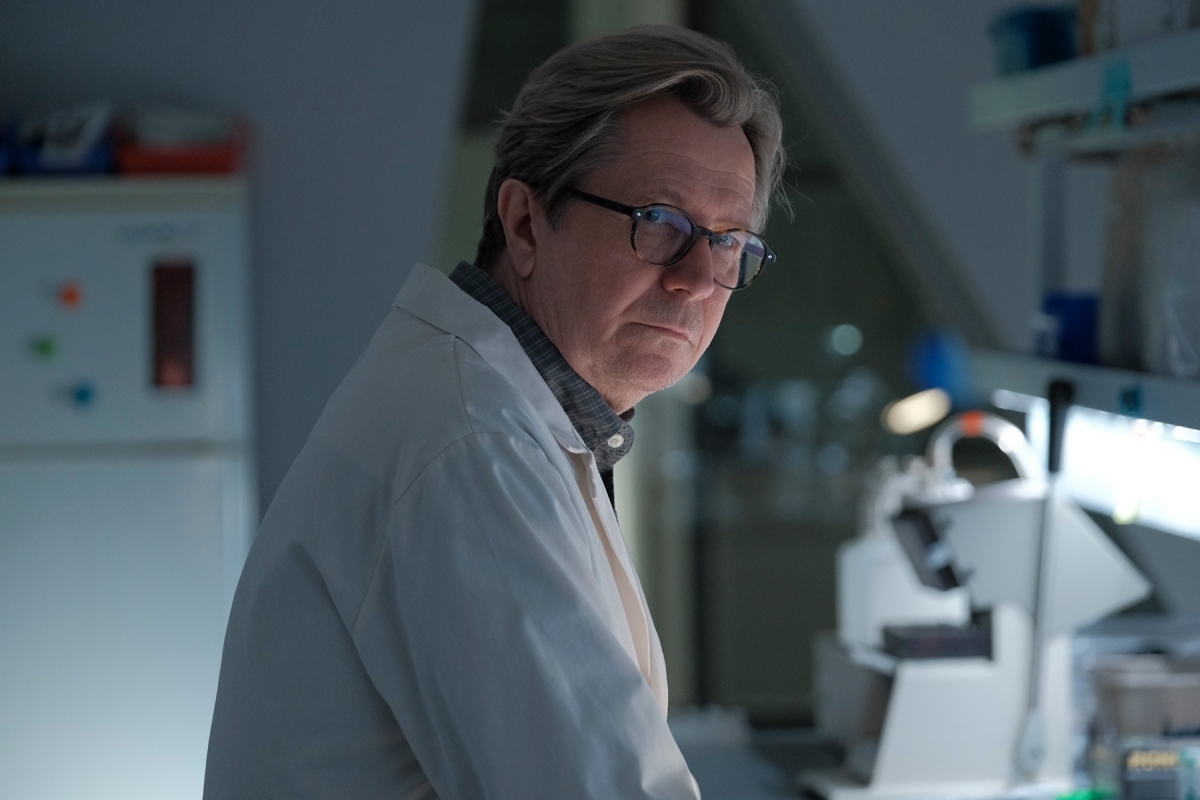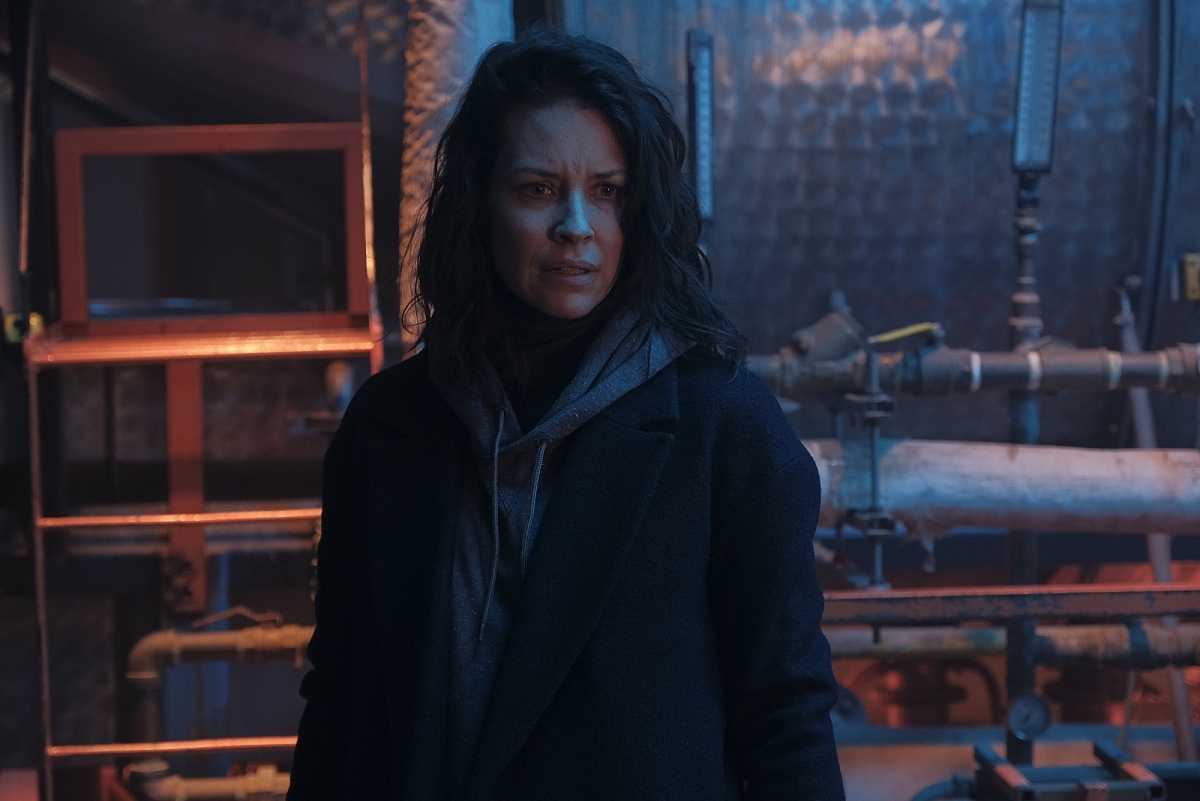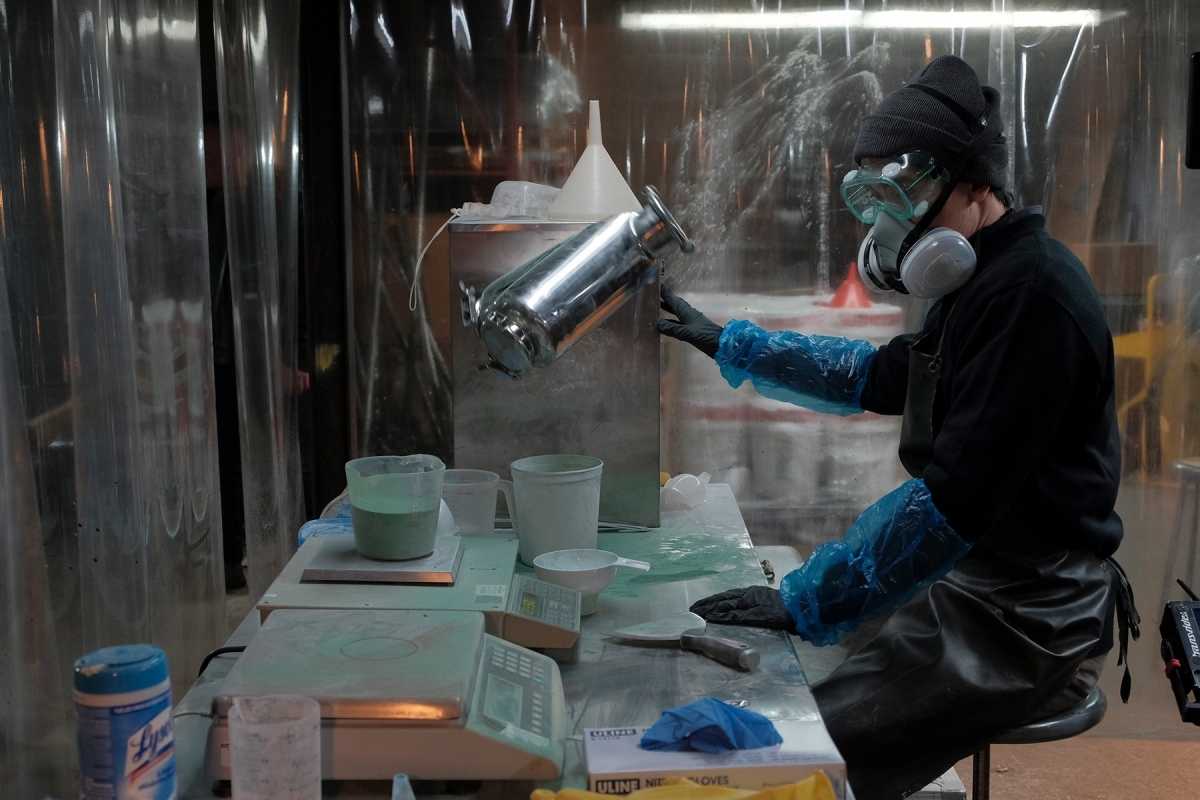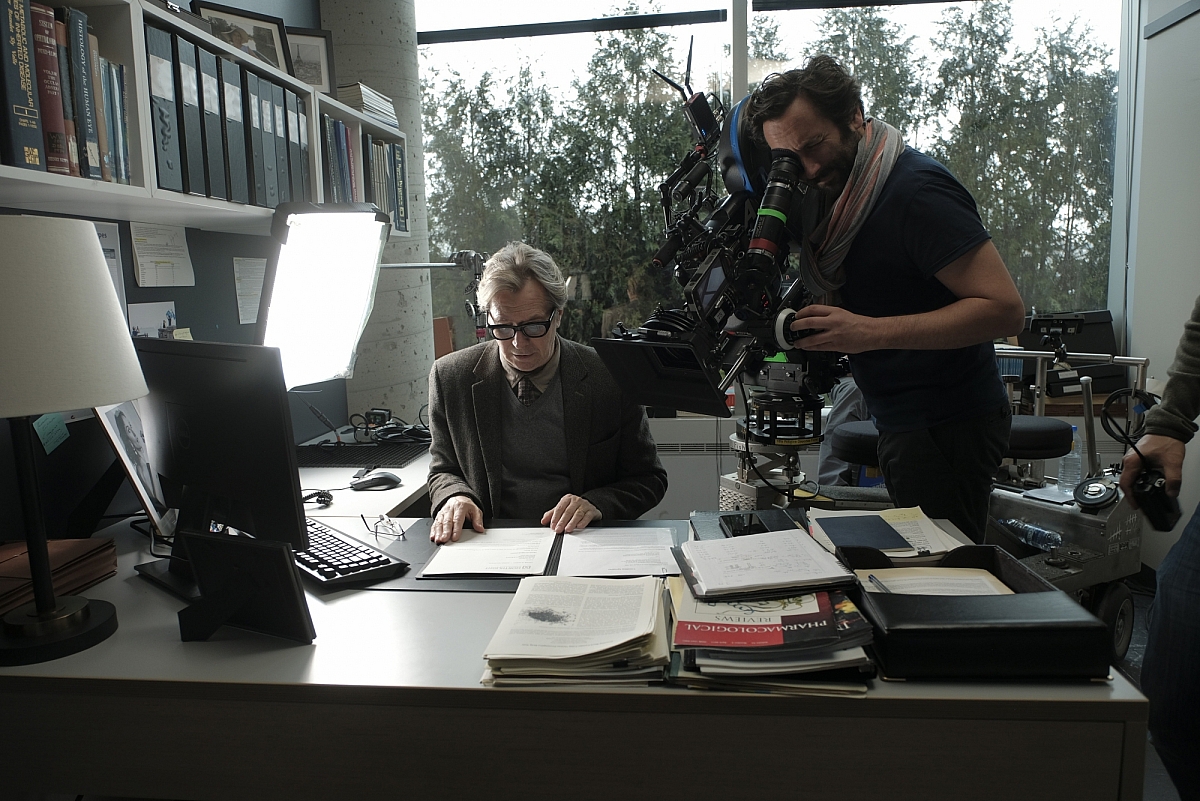Nicholas Jarecki and Nicolas Bolduc go into ‘Crisis’ mode

Oscar-winner Gary Oldman, a fan of Nicholas Jarecki after watching "Arbitrage," played a pivotal role in getting "Crisis" made. Image courtesy of Nicholas Jarecki.
Crisis is a drama thriller helmed by Nicholas Jarecki (Arbitrage) that is distributed by Quiver in the U.S. and revolves around the organization of a multi-cartel Fentanyl smuggling operation, a recovering Oxycodone addict searching for her missing son, and a university professor discovering that his employer is developing a questionable painkiller. Partnering with Jarecki to capture the performances of Gary Oldman, Armie Hammer, Evangeline Lilly, Greg Kinnear, Michelle Rodriguez, Luke Evans, Lily-Rose Depp, and Martin Donovan was Nicolas Bolduc CSC (Enemy).
A prevailing question that needed to be answered was whether each storyline should have a different aesthetic. “Bolduc and I talked about it a lot,” remarks Nicholas Jarecki. “Did we want to give each story a distinct visual feel which had been done in other movies, where one was yellow or blue. But in the end, we were in agreement in making it all cohesive. Then in editorial it was challenging to find the balance because we didn’t have that obvious separation. We needed to construct separation and closeness as the story progressed; that was a lot of experimentation, screenings, and talking to people about clarity.” The stories occur simultaneously. “Doing that jarring obvious visual distinction between two different spaces has been done in Traffic and was gutsy even for the time,” states Nicolas Bolduc. “It wasn’t necessary to try to do something that was beyond the script which was strong in itself. Everything was happening at the same time in different cities. What we had to do is create that tempo to make Nicholas not go crazy into the editing room. Trying to be dogmatic with that kind of shoot is dangerous sometimes because if you go handheld with one story, dolly with another, or do these crazy tints, it defeats the purpose of what Nicholas wrote.”
A decision was made not to visually treat the three main storylines in "Crisis" differently. Image courtesy of Nicholas Jarecki.
“Nicholas and I did discuss whether we were going to go with a lot of handheld stuff, but his visual style has always been grounded and rooted,” explains Bolduc. “I like that a lot because it doesn’t try to create artifacts around the story. We were on the same page in regards to the camera being physically close to the actors with wider lenses; that gave a lot of space to the surrounding environment but also gave a lot of proximity and power to the actors.” The camera style was inspired by classical Hollywood cinema by the likes of Gordon Willis (The Godfather) ASC and Dante Spinotti (Heat) ASC, AIC, IMAGO. “Steven Soderbergh and other filmmakers have taken different handheld approaches to movies and it has been amazing; however, I like the camera to feel as if it weighs 500 pounds,” states Jarecki. “That being said, Bolduc is an emotional cameraman in the sense that he follows the actors. He doesn’t dictate to the actor, ‘Stand here. You have to hit this mark.’ Every camera movement has an emotional motivation behind it. It’s not there to jazz it up.”
Cinematographer Nicolas Bolduc and filmmaker Nicholas Jarecki discuss a shot while braving the wintery cold of Montreal. Image courtesy of Nicholas Jarecki.
Between 1.5 to 2 million feet of 35 mm footage was shot for the project. “There is this one picture of Bolduc’s loader sitting on the floor, and he has made this collage of exposed film cans from one day of shooting!” laughs Jarecki. “I have never gone off film for the simple reason that if you turn on the camera and do nothing else it automatically looks better. It has a certain poetry to it, everything is not crisp clear, and you have the grain. There’s also its vibe, color reproduction, the falloff of light, depth of field, and how objects shift in the focal plane. Film gives you this intimacy with the faces of the actors and yet there is a layer of emotional abstraction at the same time. We had to make a lot of sacrifices to shoot on film. From a directing standpoint, one of the things that is great about film is it causes everyone to bring their A game. When you call, ‘Action.’ Then boom! It’s on. I would shout out in a middle of a take, ‘We’re burning film!’ It focuses the energy and creates this magic that occurs between takes. It can be restrictive. We were doing a lot of stuff in cars and you have 400-foot magazines. But those limitations press you to do better and be more inventive.”

Evangeline Lilly was shot on Panavision C series lenses from the 1960s that have a soft quality to them and flare easily. Image courtesy of Nicholas Jarecki.
Shooting on film suited the story. “The script written by Nicholas was about faces,” states Bolduc. “There are three particular characters living three different lives. When you start exposing film again you realize that it exposes faces in a way that digital cannot handle. It never is the same. How the grain and light react on faces, and the way the magenta, green and yellow blend together, the skin tones become fantastic. You have to work harder in digital, but with film you turn it on and it’s magic.” The night scenes were captured on KODAK VISION3 500T Color Negative Film 5219 while KODAK VISION3 250D Color Negative Film 5207 was utilized for the daytime settings. “It’s classic stuff. I didn’t push it. We didn’t want too much grain as the image needed to be clean and crisp. We also wanted to avoid it feeling like a documentary. It was important to the story to have the camera and filmmaking be invisible.” The classic camera style supported the narrative. “This film is about the humanity of flawed characters,” notes Jarecki. “People fighting a tough thing and trying to make a change in the system. Yes, it’s big budget and has action and thrills, but at the same time it is a personal film. We wanted to keep it focused on the characters.”

Principle photography took place in 57 locations with cinematic influences being "The French Connection" and "Heat." Image courtesy of Nicholas Jarecki.
There is no shortage of action sequences. “In the beginning, there is a chase,” explains Jarecki. “Bolduc has the ability to cinematically envision a complex sequence of 30 or 40 different shots and how they will tie together. He made these beautiful storyboards. The action is punctuation for the character sequences where we’re living with Gary Oldman or Evangeline Lilly or Armie Hammer or Lily-Rose Depp. We’re seeing their psyche. We didn’t need to jazz it up with giant crane shots because the actors are doing so much that it’s coming through.” The choice of lens caused some interesting discussions between the cinematographer and filmmaker. “Nicholas and I were in two different spaces about this. We shot Panavision C series lenses which are old lenses from the 1960s. They have a soft quality to them and flare easily.” A complication arose on the first day of shooting which took place on a mountaintop with a windchill that made it feel like minus 50. “I love the way the film looks but oh boy, what a challenge these lenses were!” states Jarecki. “We took them up on a mountain to shoot this epic action chase through the snow with helicopters, and one of them froze and broke! The lens also requires quite a lot of light. It has an artisanal analog quality, which is in the tradition of cinema that we were going for, like The French Connection or Heat. Going back to that era was a great idea from Bolduc as was doing anamorphic 2.35:1. I’m glad we did because it gives you an expanded scope. You can also get intimate with the actors that way.”

Cinematographer Nicolas Bolduc finds it faster to shoot with only one camera. Image courtesy of Nicholas Jarecki.
The compact and light Arricam LT camera had to share the same space with the actors which meant often using 40mm, 50mm and 75mm lenses. “Very rarely did we have two cameras,” remarks Bolduc. “Only in certain scenes where we had a couple of people chitchatting around a table or these long office scenes. But because the camera was so close to the actors it was difficult to sneak in another camera at that point. In my experience, it is faster to shoot with one camera than trying to sneak two cameras and compensate for lighting. You have to put on longer lenses and then you don’t have the same sort of point of view or proximity with the characters.” Jarecki favors using a single camera. “Everything we try to do is old school because sometimes reinventing those ways just takes more time. They made movies in a certain way for 75 years so there is something to be learned there about being deliberate about what we’re looking for. We have these finely oiled actors like Gary Oldman and Evangeline Lilly doing these incredible performances. We don’t want to do too many takes and put too much equipment there. We want that beautiful poetry between the actor and camera. Let’s understand what we want to get. Get it and move on.”
It was important to keep the camera close in proximity to the cast. Image courtesy of Nicholas Jarecki.
Film can require more light than digital for night scenes, so the reliance was on HMIs and 18Ks rather than LEDs. “I could work with LEDs a lot, but the truth is I didn’t feel it was going to be the same color temperature and feeling,” notes Bolduc who collaborated with gaffer Eames Gagnon. “I went to back to the old school way of lighting. When we started testing, I had a lot of strips of tungsten bulbs that were actually screwed into the ceilings to create overheads. We never utilized the classic LEDs that are used today which are soft and beautiful. I didn’t want a perfectly soft overhead or a perfectly well-balanced light in the actors’ faces. I wanted it to be a little bit everywhere, so I bounced a lot of tungsten lights with various little bulbs; that was more interesting and created more power than what we needed sometimes for the night scenes.” The weather posed some lighting challenges, in particular for the drug trafficking action sequence shot in a warehouse situated in Montreal. “It’s this massive complex,” recalls Jarecki. “We had no way to light the interior, so it had to be lit from the outside. Of course, the weather completely changed on the day. Bolduc had to put 18Ks on three Condors to flood that place.”
Cinematographer Nicolas Bolduc didn’t want a perfectly soft overhead light or a well-balanced light in the faces of actors. Image courtesy of Nicholas Jarecki.
A drawback of shooting on film was not being able to take advantage of LED monitors that accurately display the look of the imagery. “It’s in the camera, it’s on the film stock, it’s going to be different when it comes out afterwards, and what you have is a crappy video monitor with a very soft image,” states Bolduc. “It can be frustrating.” Jarecki soldiered onward despite being unable to find a suitable video tap. “That being said we did try to create a look in camera and to paint with light. We did do DI and had help from one of our production partners as well as Stefan Sonnenfeld at Company 3. But at the end of the day, we were going for natural. We’re not trying to create a look in there. We’re trying to honor film. Maybe we even go photochemical next time!”
Most of the principal photography took place in Montreal which is Bolduc’s hometown. “I was a newcomer to Montreal and we really pounded the pavement,” remarks Jarecki. “We had 57 locations because I feel as a visualist that you want to keep changing locations. My theory is keep changing the light. You don’t want to keep coming back to the warehouse. You want to show viewers cool new dynamic environments because it’s part of the excitement of a film. We wanted to have that scale and scope. We scouted at least 570 places.” Equal in scope is the cast, with Gary Oldman being impressed by Arbitrage which resulted in Jarecki receiving a Chicago Film Critics Association Award for Most Promising Filmmaker in 2012. “I had a number of friends who have had trouble with opioids, and it was top of mind so I wrote the script. I went to Gary and said, ‘Why don’t we do this?’ He said, ‘This is urgent. We should do this. I’ll come on, produce it with you and help you put it together.’ He was the first person to join the project. Evangeline Lilly and Armie Hammer were actors who I’ve always liked. From there it was me calling my friends, like Michelle Rodriguez, Greg Kinnear and Lily-Rose Depp. There was a great energy on set. Every day something new and exciting happened.”